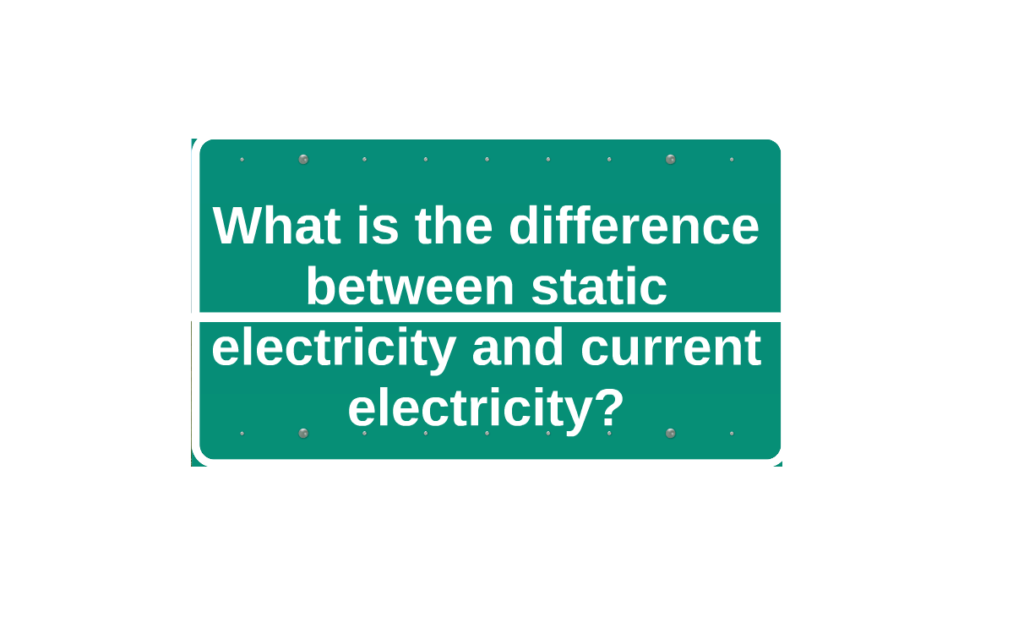Difference Between Current and Static Electricity- The main distinction between static and current electricity is that with static electricity, the charges are stationary and build on the inductor’s surface. The flow of electrons inside the conductor is what causes current electricity.
On Linquip’s website, you can find information about static electricity or current, depending on your needs. Any questions you may have about these terms can be answered by our team of experts at Linquip. Take a look at this article from Linquip, “What Is Electrical?“.
In addition, you can get access to all of Linquip’s services by registering as a Linquip Expert. Are you Considering Guest Posting on Linquip? As a guest, you can submit your content on the Linquip platform.
What is the Difference Between Current and Static Electricity?
The most important distinction between current and static electricity is that with static electricity, the charges are stationary and accumulate on the insulator‘s surface. In current electricity, however, electrons move within the conductor. The comparison table below explains the additional distinctions between static and current electricity.
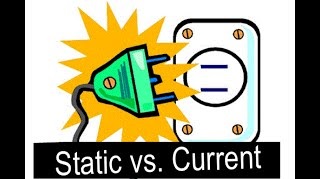
Static electricity is used in pollution control machines, machine painting, and xerography, among other applications. The pollution control machine’s metallic plates turn dirt particles into static charge. The static dirt particles are drawn to the pollution control machine’s charge plate on the other side. As a result, the device accumulates. The current electricity is used to power mechanical devices such as fans and motors. For more information about their differences, click here.
Static Vs. Current Electricity in Comparison Chart
| Basis for Comparison | Static Electricity | Current Electricity |
| Definition | The electricity which is built up on the surface of the substance is known as static electricity. | The current electricity is because of the flow of electrons. |
| Causes | It induces because of the movement of the negative charges from one object to another | The current electricity is because of the movement of the electrons. |
| Material | The static electricity develops both in the conductor and insulator. | The current electricity develops only in the conductor. |
| Magnetic Field | Not induces the magnetic field. | It induces a magnetic field. |
| Time Period | Exist for a short time. | Exists for a long time. |
| Measuring Device | Gold leaf electroscope | Analog and digital meter. |
| Examples | Lightning strikes, it develops by rubbing the balloons on hair, etc. | The current electricity is used for running the fan, light, T.V, etc. |
Introduction to Current and Static Electricity
Imagine a world without televisions, computers, cell phones, automobiles, or the light bulb. Electricity is a wonderful thing. Many people are still perplexed by it since it is such a broad subject of study. Electricity has had a significant influence on our way of life. I can’t fathom a time when I didn’t have access to power. We’ve grown reliant on its apps, which have made our lives far more pleasant, pleasurable and bearable.
Electricity can refer to either the energy stored in the form of charged packets in a body or the flow of energy stored in the form of charged packets in a body. Static electricity is caused by the accumulation of charges on the surface of an item, known as an insulator, whereas current electricity is caused by the movement of charge through an object, known as a conductor. There may be several fundamental distinctions between static and current electricity that must be investigated.
Electricity, in technical terms, is a phenomenon that involves the displacement or movement of electrons. Most of us just enjoy the benefits of electricity without fully comprehending the physics behind it or the phenomena that it causes. For the time being, let’s focus on two aspects of electricity: static electricity and current electricity.
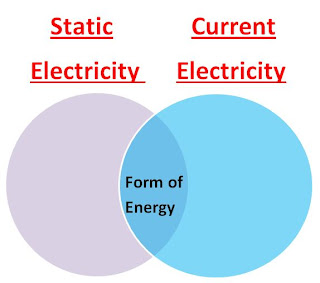
Definition of Static Electricity
Static electricity refers to electricity that is at rest. It is the accumulation of electric charges on the surface of objects or substances. These “static charges” don’t go away unless they’re grounded or released.
The term “static” refers to a situation in which something is not moving. Static electricity is electricity in which the charges remain at rest on the surface of a material. We may rub the two static items together to produce static electricity.
Every item is made up of atoms, which are microscopic particles. The nucleus and free electrons make up an atom. Neutrons and protons are distributed evenly throughout the nucleus. The atom’s electrons travel around in their orbit. Some of the substance’s free particles are weakly bonded.

When the two items are rubbed together, electrons with weak bonds hop from one object to the other. When electrons are removed from an item, it becomes positively charged. And the electron-gaining item becomes negatively charged. Static electricity is caused by the potential that builds between static things.
Friction or abrupt contact, such as rubbing two materials against each other, produces static electricity. Atoms are normally uncharged. These are considered neutral substances, although friction can cause them to lose or acquire electrons.
The rubbing process can cause certain compounds’ atoms to lose their electrons. The substance or material will become positively charged as a result of the loss of electrons. The extra protons resulted in a positive charge on the material. Negatively charged substances, on the other hand, are those that acquire electrons.
Certain atoms have a proclivity for losing electrons, and certain atoms have a tendency for accepting them. When these two materials are rubbed together, they have a high potential for producing static electricity. The phenomenon of static electricity is essentially produced when positive and negative charges are separated.
Take a look at the atoms that make up the hair and the balloon. Negative charges transferred between the balloon and the hair when we rubbed it on it. Allow the negative charge from the hair atom to transfer to the atom of the balloon. As a result, the hair atoms become positively charged, while the balloon atoms become negatively charged.
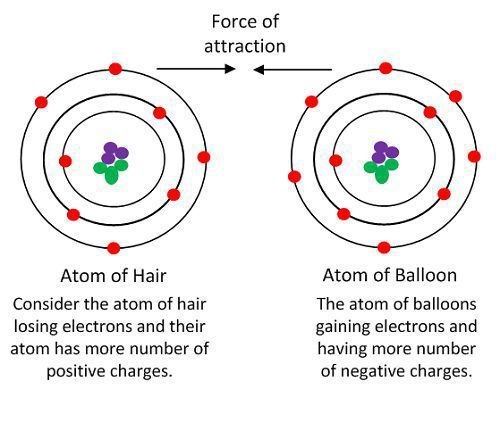
The hair and the balloon are attracted to one other. The potential difference between the hair and the balloon is created by the positive and negative charges. As a result, static electricity is generated between them.
Current electricity, on the other hand, is the phenomenon of electrons traveling in a certain route or direction, such as via conducting materials in a stream. Electricity may originate from various sources. Batteries are the most widely utilized source of current electricity. To generate power, these batteries rely on chemical processes within them.
Definition of Current Electricity
Current electricity is the electricity that is generated as a result of the movement of electrons. It can only form on materials with unbound electrons. Current electricity is used to accomplish mechanical tasks such as moving a fan or powering a machine. Because of current electricity, the magnetic field binds together.
Current electricity is divided into two types: AC (alternating current) and DC (direct current). Charges flow in both directions in alternating current. Charges in direct current just move in one direction.
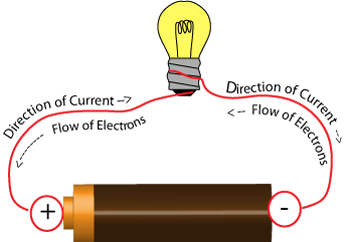
The atom is a material made up of very small particles including the nucleus and electrons. The nucleus is stationary, whereas the electrons move around the atom’s orbit. There are two kinds of chemicals. One includes electrons that are weakly bound, while the other includes electrons that are firmly bound.
The conductor is a material that has a weak connection between electrons and an atom. When an external force, like the voltage, acts on it, thermal energy is released, and electrons become energized, leaping from one atom to the next inside the conductor. The current electricity is generated by the movement of electrons.
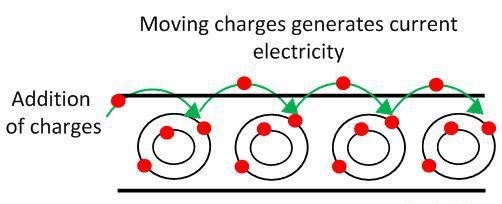
The electrons in nonmetals are tightly bonded. The electron, on the other hand, leaps from one atom to the next in metals due to the repulsive characteristic of charges. The current electricity is generated by the movement of electrons.
Generators are generally used to create large volumes of current electricity. Many of them are used in power plants to generate massive amounts of current energy. The process is generally regulated, and it necessitates the passage of electrons down a route which is appropriately referred to as the ‘electric current.’
Key Differences Between Static and Current Electricity
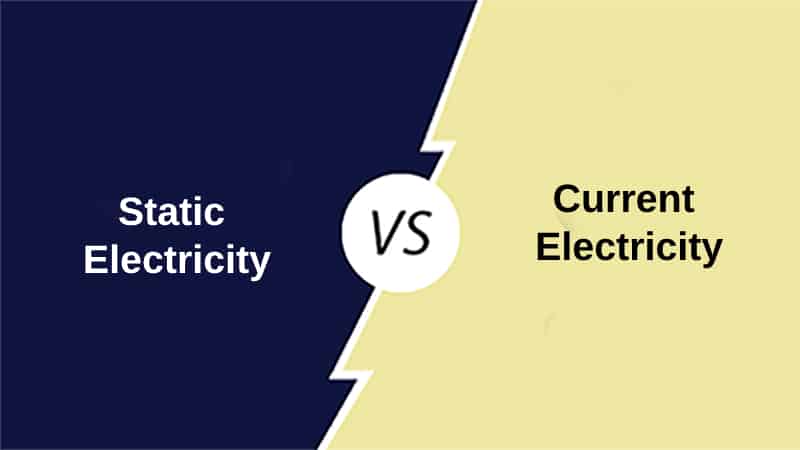
- Static electricity is defined as electricity in which charges stay static. Current electricity, on the other hand, is created by the passage of charges.
- The transfer of negative charges from one item to another causes static electricity to form. The motion of electrons in the atoms of the conductor generates current electricity.
- Static electricity forms on the insulator and conductor surfaces, but current electricity forms solely in the conductor.
- The magnetic field is created by current electricity, and it has nothing to do with static electricity.
- Static electricity is only present for a brief time, but current electricity is present for a long time.
- The gold leaf electroscope detects the magnitude of static electricity, whereas the digital and analog meters measure current electricity.
- Static electricity is demonstrated by lightning strikes. The charge builds up on the cloud’s surface, resulting in lightning strikes. The amount of electricity is now used to power industrial machines and household gadgets.
Download Current vs Static Electricity PDF
The PDF version of this article can be downloaded so that you can access it whenever you like.
Conclusion
The charges in the rest state create static electricity. The movement of negative charges is also responsible for the development of current electricity. Current electricity is generated by the passage of electrons down a conductor, whereas static electricity is caused by the accumulation of electrical charges on the surface of things. When objects are rubbed together, electrons are lost and/or gained, resulting in the condition of static electricity. Current electricity is typically regulated, and it is the most often utilized electrical phenomenon in a wide range of applications.
Read More on Linquip
- Difference between Electric and Magnetic Fields
- Difference Between Energy and Power
- A Simple Guide to the Difference Between Motor and Generator
- Difference Between Scalar and Vector Quantity
- Difference between General Relativity and Special Relativity
- Difference between Orbit and Orbital
- Difference between Density and Relative Density
- Difference Between Hydraulics and Pneumatics
- Difference Between 2 Stroke and 4 Stroke
- Difference Between dB and dBm
- Difference Between Mechanical and Electromagnetic Waves
- Difference Between Period and Frequency
- Difference Between Permanent Magnet and Electromagnet

